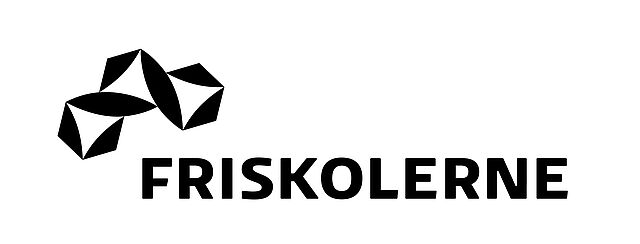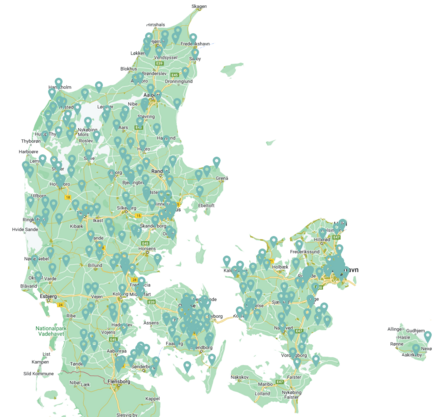-
What is a free school?
Compulsory education and not compulsory schooling
Most of the free schools are basic schools from kindergarten until 9th grade - a few continue until 12th class (Rudolf Steiner schools). Moreover, they usually emerge as a parents' initiative in the light of the Danish constitution stating that in Denmark there is compulsory education, not compulsory schooling.Thus, free schools are an alternative to the municipal schools. The only rule is that the free schools have to ensure that the education is - at least - as good and rewarding as in the public schools.
Grundtvig and Kold as inspiration
In Denmark the free school tradition dates back to the middle of the 1800s in which especially Christen Kold and N.F.S. Grundtvig play a fundamental role as inspiration.Today free schools reflect a wide range of schools based on different ideologies of religious, political og pedagogical nature.
-
Short facts about the history of the free schools
- The first free school opened in 1852
- The free schools emerged in a time of grassroot movements
- The free schools were built on the ideas of the poet N.F.S. Grundtvig and the teacher Christen Kold who saw learning as life-long, and relating to the essence of the individual's being in the world
- From the ideas of Grundtvig and Kold, the idea of parents' right to choose their children's education emerged. This principle can be tracked back to the first school Act from 1814
- In the event of the Friskole Act in 1855, the rights of the parents were firmly established
- The free schools are a part of the independent school tradition which among others include folkehøjskoler (folk highschools) and efterskoler (continuation schools)
- The first free school opened in 1852
-
The diversity of free schools
Free schools can choose to base their school on an ideology of religious, political og pedagogical nature.
The result is then various groups of free schools, including:
- "Grundtvig-koldske" free schools
- "Lilleskoler"
- Private schools (Realskoler)
- Christian free schools
- Free schools established by Muslim immigrants
- Catholic free schools
- Schools with inspiration from Rudolf Steiner
- Schools for the German-speaking minority
- Outdoor free schools
- And many more.....
-
The economy of free schools
- Today, the state grants an amount of money per pupil equal to 71 % of the average expense of a student in a municipal school. On top of that comes a building grant that contributes to the costs of the rent, maintainance, construction etc.
- In average, a parent pays 2.050 USD per child in a free school (including after-school child care) pr. year.
- In the 2014 finance bill, 4.4 m USD were assigned to the free place subsidy for the free schools. The subsidy is made for making sure that all parents - regardless of their income - can make use of the free schools. However, the amount only covers 30 percent of the applied subsidy.
- The actual grant per pupil varies from one school to another depending on the size of the school (number of pupils), the age of the pupils (pupils from 13 years and older release higher subsidy) and the location of the school.
- On nearly 9 out of 10 free schools, the parents take care of the school's cleaning, maintenance etc. In that way the school saves expenses.
-
The free schools today
17 percent of the Danish pupils in the basic schools attend one of the 550 free schools. This corresponds to 110.000 pupils. In comparison, in the municipal schools 570.000 pupils attend only 1.300 schools.
Big municipal schools and small free schools
The average number of pupils in a municipal school is 380 with a average class size of 19,4 pupils. In the free schools the average number of pupils is 196 with a class size of 15,6 pupils.
-
How do the free schools emerge today?
The establishment of free schools in Denmark can take form in two ways:
From a local municipal school to a free school
A local public school closes and a group of parents want to fight in order to keep the school. They establish themselves as an association, they buy or rent buildings, they hire a staff, they write regulations, they renovate, paint and struggle to make the school look nice, and after about one year with a lot of work, the school can continue - now as a local free school.Starting from scratch
This means a group of parents are working together to establish an alternative to the public schools. Maybe they want a school with a certain pedagogical point of view, or maybe the school should built on specific values that the parents are missing in the public schools.The law requires a new free school to have 12 pupils (during the 1st year) to be able to receive grants from the state.
-
Schools with no examinations
The free schools have the legal authority not to make use of examinations. Out of 540, 30 free schools have a school system without that. Additionally, a number of schools apply for an exemption to submit to tests in Christianity and/or history based on the school's values.
The schools without examinations evaluate the pupils by use of other methods than by giving grades.
Read the article about the non-examination Rudolf Steiner School in Odense



